How to install Apache, MySQL and PHP in OS X
Ross McKillop
Network Administration - Using MAMP, you can quickly and easily install Apache, PHP and MySQL on your Mac. Each package can be installed separately, but MAMP has several advantages to fix these individual settings. Besides, MAMP will not change or interfere with the existing version of Apache running on the Mac operating system. If Apache / MySQL / PHP is not needed anymore, delete the MAMP directory and then everything will return to its original state. This article will guide you through the initial installation and installation process .
- The first thing you need to do here is download MAMP. Open the .DMG file, then review the registry and click the Agree button.

- Drag the MAMP folder into Applications. Ignore the MAMP PRO folder (unless you want to buy the MAMP Pro version - it includes a number of extended years, but not for free).
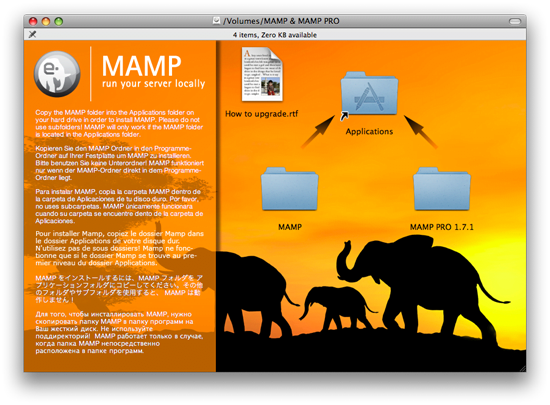
- Give MAMP about 1 minute to install
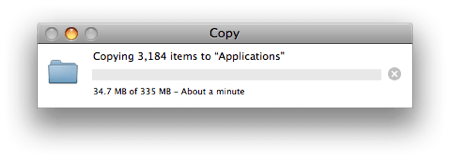
- Navigate to Applications , select the MAMP folder, and double-click MAMP.app .

- The MAMP interface will launch, then Apache and MySQL will start.
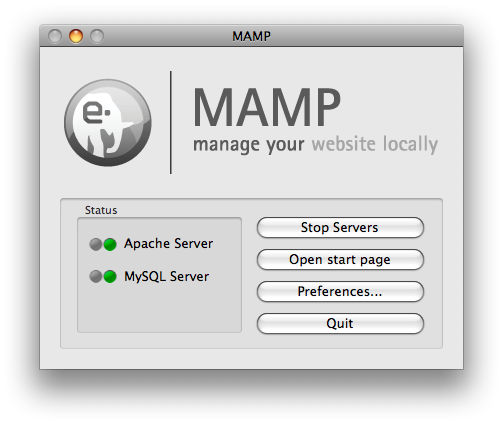
- Your browser will open and load MAMP's display tables (http:/// localhost: 8888 / MAMP /? Language = English). This page contains all the information about the default settings for the MySQL server and gives you quick access to the tools contained within it (phpinfo, phpMyAdmin and SQLiteManager).
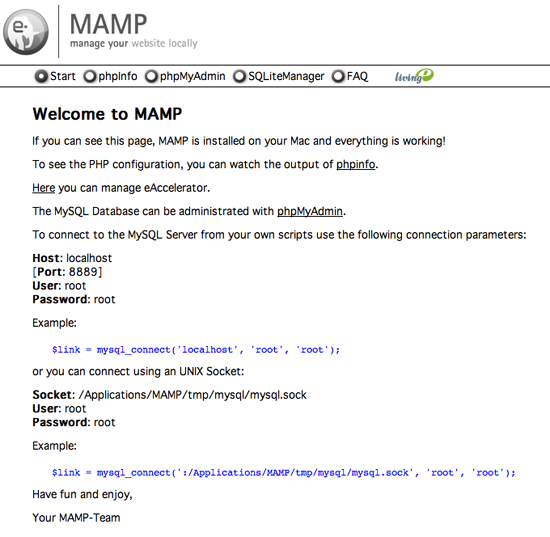
- Select phpMyAdmin to configure MySQL database.

- The 'root' directory of your web server (document root) can be found in the htdocs subdirectory of MAMP.
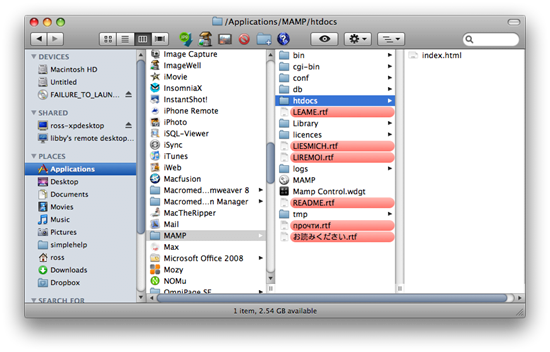
- Put the .html, .php, . files in the htdocs directory, they will be available at http:/// localhost: 8888

- Go back to the MAMP interface application, click the Preferences . button. The first tab will allow you to control how the servers are started / stopped, the start page will have to load when MAMP opens, and the location of the start page.
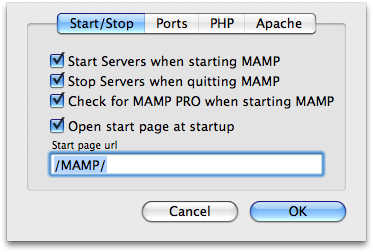
- The Ports tab allows you to change ports for Apache and MySQL.
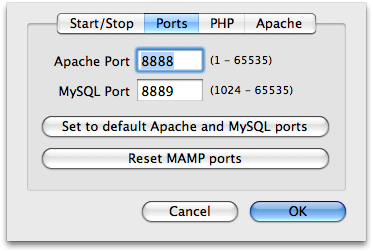
- The PHP tab lets you specify which version of PHP you like to use, whether or not Zend Optimizer is enabled and which cache to use.

- Finally, the Apache tab will allow you to change the Document Root by default.
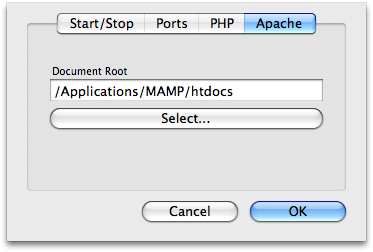
4 ★ | 1 Vote
You should read it
- How to install and configure MySQL server on Pi
- Install and configure Apache in Ubuntu
- Install Cherokee with PHP5 and MySQL supported in Fedora 14
- Access applications directly to XAMPP MySQL Server
- Download XAMPP 8.0.2: Free local Web server
- How to Send Sql Queries to Mysql from the Command Line
- How to install MySQL Workbench Community Edition on Windows 10
- How to install MySQL on Ubuntu 20.04
May be interested
- How to Install the MySQL Database Server on Your Windows PC
 this wikihow teaches you how to install the mysql server program on a windows 10 computer. in order to install mysql on a windows computer, you must first have python 2.7 (not python 3+) installed. open the python download page. go to...
this wikihow teaches you how to install the mysql server program on a windows 10 computer. in order to install mysql on a windows computer, you must first have python 2.7 (not python 3+) installed. open the python download page. go to... - Install and configure Apache in Ubuntu
 in the following article, we will show you some basic steps to install and set up a web server system using apache on the ubuntu platform. in fact, this step is quite simple and easy, just use synaptic package manager, ubuntu software center to search and install apache2 module package.
in the following article, we will show you some basic steps to install and set up a web server system using apache on the ubuntu platform. in fact, this step is quite simple and easy, just use synaptic package manager, ubuntu software center to search and install apache2 module package. - Install LAMP Stack on Ubuntu 18.04
 lamp stack is a collection of open source software made up of linux operating system, apache, mysql database and php. let's explore how to install lamp stack on ubuntu 18.04.
lamp stack is a collection of open source software made up of linux operating system, apache, mysql database and php. let's explore how to install lamp stack on ubuntu 18.04. - Download XAMPP 8.0.2: Free local Web server
 xampp was created by apache friends. it stands for cross-platform (x), apache, mariadb (mysql), php and perl.
xampp was created by apache friends. it stands for cross-platform (x), apache, mariadb (mysql), php and perl. - How to Send Sql Queries to Mysql from the Command Line
 a simple text-based program called mysql should have been part of your mysql installation. it lets you send sql queries directly to the mysql server and output the results in text format. it is a quick and easy way to test your mysql...
a simple text-based program called mysql should have been part of your mysql installation. it lets you send sql queries directly to the mysql server and output the results in text format. it is a quick and easy way to test your mysql... - How to install WordPress locally on ServerPress
 to develop wordpress locally on a computer, we need a local server with apache and mysql preinstalled on the machine. the easiest way to get these things is to install an application.
to develop wordpress locally on a computer, we need a local server with apache and mysql preinstalled on the machine. the easiest way to get these things is to install an application. - Compare Nginx and Apache
 the truth is that both apache and nginx are at the core of the complete web stack (lamp as well as lemp) and the final choice depends on the needs of each individual.
the truth is that both apache and nginx are at the core of the complete web stack (lamp as well as lemp) and the final choice depends on the needs of each individual. - How to install XAMPP, How to configure XAMPP on Windows 10
 in this guide, you will learn the steps to install xampp on windows 10 as well as instructions for configuring the web environment and fixing some common problems after setup.
in this guide, you will learn the steps to install xampp on windows 10 as well as instructions for configuring the web environment and fixing some common problems after setup. - How to install and configure Apache on Rocky Linux
 apache http server is one of the most widely used web servers in the world. it is a free, open source, cross-platform web server that offers powerful features such as loadable modules, strong media support, and extensive integration with other software.
apache http server is one of the most widely used web servers in the world. it is a free, open source, cross-platform web server that offers powerful features such as loadable modules, strong media support, and extensive integration with other software. - How to Connect to MySQL Using PHP
 if you already know some of the basics of writing php scripts, you may be ready to learn about a set of built-in php functions that allow you to connect to and manipulate a mysql database. if you do not already have a mysql server (most...
if you already know some of the basics of writing php scripts, you may be ready to learn about a set of built-in php functions that allow you to connect to and manipulate a mysql database. if you do not already have a mysql server (most...










 7 things Windows 7 needs to learn under Mac OS X
7 things Windows 7 needs to learn under Mac OS X 10 ways to speed up Mac OS X
10 ways to speed up Mac OS X Run IE on Mac
Run IE on Mac